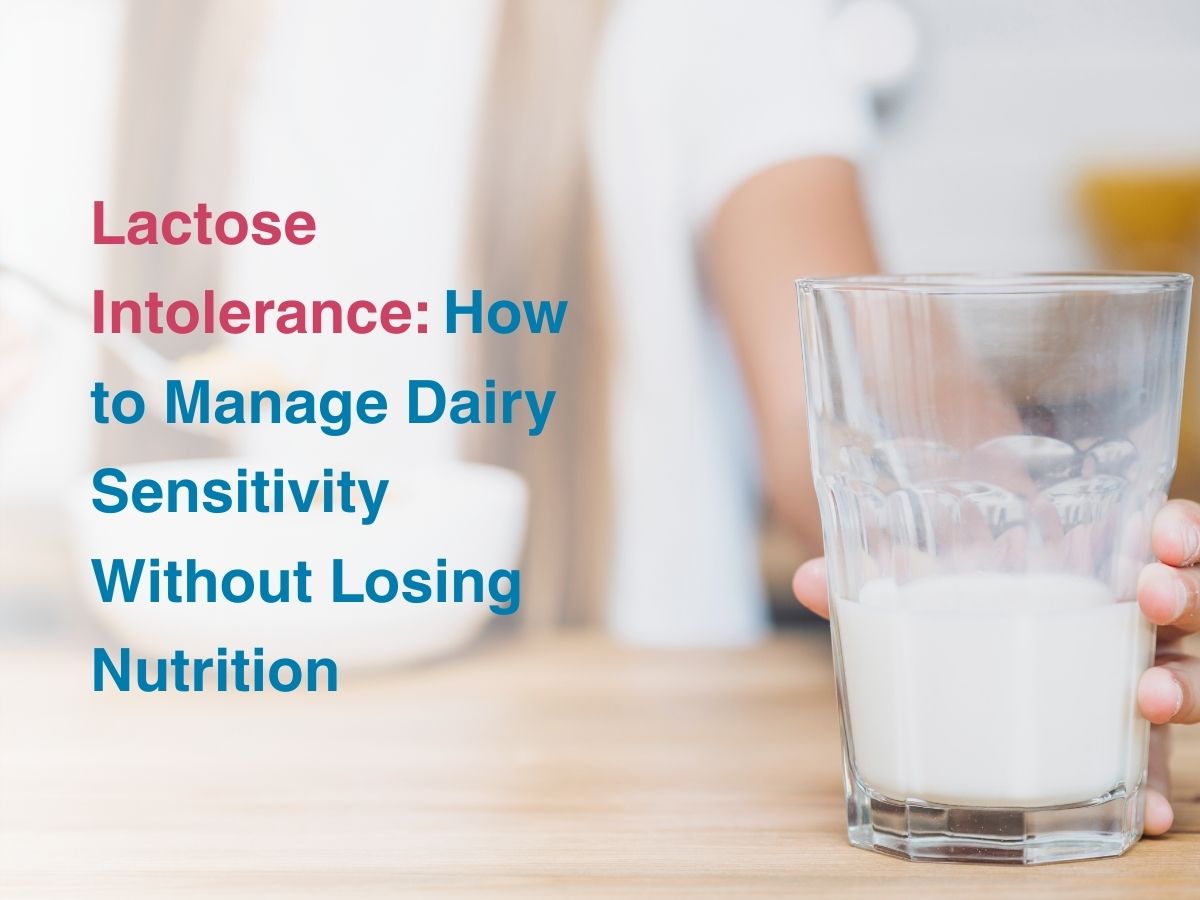
Lactose Intolerance: How to Manage Dairy Sensitivity Without Losing Nutrition

Lactose is a sugar that is predominantly found in milk and other dairy products. But, not everyone can digest it with ease. In fact, almost 65% of the Indian population is said to be lactose intolerant, and this population is present more towards the south of India. North Indians are said to be more dairy tolerant, by contrast. Lactose intolerance is not exactly life threatening but can cause unpleasant symptoms and affect your quality of life. It is also important to remember that a food intolerance like this is NOT the same as a food allergy.
What is Lactose Intolerance?
When your body produces lower amounts than normal of lactase- the enzyme needed for the breakdown of lactose, you have lactose intolerance. Since there is lesser breakdown, it automatically leads to lactose malabsorption. Since this absorption is bad in the small intestine, lactose travels further down into the large intestine- where the majority of symptoms are felt. Here, the lactose lies around, gets fermented and releases more gas- causing bloating, gas related pain and diarrhoea. Some people can break down some lactose, others a little more while others may not have any symptoms at all and feel completely normal. There are 4 types of lactose intolerance- primary, secondary, congenital and developmental respectively. Intolerance is different from a food allergy- as the immune system is involved in modulating the process. Symptoms may also differ- you may develop an itch or a rash.
Causes Of Dairy Sensitivity
The main cause of dairy sensitivity is lactase deficiency. Since each of us has a unique gut microbiome and processes food differently, the degree of severity of symptoms can be different. Some people may have populations of bacteria that convert lactose into lactic acid more efficiently, when compared to just converting it to gas. Most individuals don’t make enough lactase as they grow into adulthood. This is primary intolerance. Some people may develop this condition because of an injury or some other condition- called secondary intolerance. Eating milk, curd or soft cheese which have lactose in them can trigger symptoms.
Symptoms of Lactose Intolerance
Common symptoms of lactose intolerance include- bloating, gas pain, vomiting, nausea, gurgling sounds from your stomach and severe diarrhoea. These symptoms come after about a day of lactose exposure as food takes about 10 hours to reach the large intestine and excretion only happens after about 24-36 days, on average.
Diagnosing Lactose Intolerance (Breath Test)
Diagnosis can be done with simple tests
- Hydrogen Test- where they check for elevated levels of hydrogen. Higher levels mean you have greater numbers of bacteria fermenting food for longer than necessary, which can cause gas to be released.
- A blood sugar test can also be done to check for lactose levels in blood after ingestion. If your blood sugar levels remain almost the same or show no increase, then you are lactose intolerant as you are not absorbing it well.
- Stool acidity test- After ingestion of lactose containing food and stool is excreted, a sample is taken to check for acidity- to ascertain how much lactic acid is present. High amounts can mean intolerance, while lower values mean the opposite.
Managing Lactose Intolerance Naturally
Making changes to your diet can help you manage the condition better in the long term- you can remove milk, curd or related items at first and then slowly reintroduce them one by one, a few days at a time. Lactose intolerance is a chronic condition that does not really go away.
Conclusion
Dairy alternatives for lactose-intolerant people include the use of plant based milks- made of nuts or soy beans for example. Coconut milk is another well known alternative, though it may not be great for all kinds of foods or cuisines, as it has a subtle flavour that not everyone may like. If there are changes to your gut microbiome, then you may tolerate lactose better, but this happens rarely. A major concern with lactose intolerance is the possibility of developing calcium deficiency- especially in young children. Supplementing with calcium and Vitamin D can help a lot, though you should talk to your doctor about dosage.






